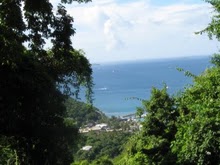I visited a place I had never been before today and not only did I see two species of hawks hunting the area, I also got many pictures of small birds which are totally unfamiliar to me, and baby geese. The highlight of my day however, was the sight two Horned Grebe
 |
| Horned Grebe pair |
 |
| Horned Grebe in the distance |
 |
| Horned Grebe |
This is what I have discovered about this bird so far. The Horned Grebe's habitat range is all of Canada, the US, Europe and Asia. It nests near the water's edge, usually among thick vegetation and sometimes in groups, and usually lays two to four eggs. This bird, like all grebes has legs that are set too far back on the body, making it difficult for it to walk well, which is why it spends much of its time on the water, and will sometimes carry it's young on it's back. In the fall, usually in November, it migrates to the coast and open water.
 |
| Horned Grebe Close up |
During the breeding season this bird prefers vegetated areas near fresh water lakes, marshes, or ponds. Like all divers, it typically feeds below the water's surface on fish and crustaceans. It will also feed on insects at the water's surface however. It is a small bird about half the size of a Mallard Duck, but it's call is loud and distinct, as is the case with other species of Grebe. During non-breeding season it migrates overland in stages to inhabit coastal shore lines. Thankfully this bird is not an endangered or threatened species. As usual if you wish to learn more about this beauty just follow the links:
http://www.birdlife.org/datazone/species/index.html?action=SpcHTMDetails.asp&sid=3640
http://www.avianweb.com/slavoniangrebes.html
http://sdakotabirds.com/species/horned_grebe_info.htm
Susan











No comments:
Post a Comment